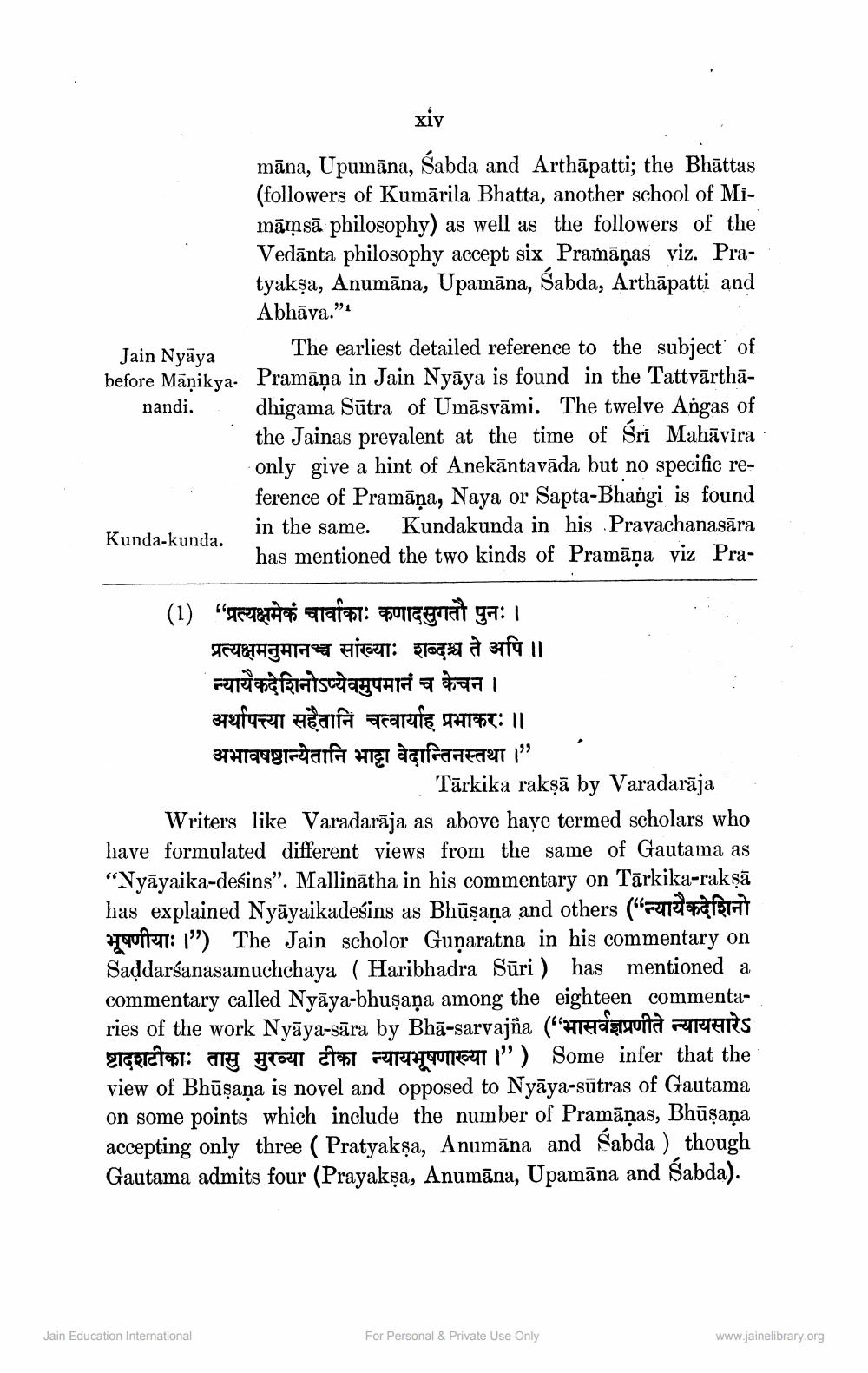________________
xiy
māna, Upumāna, Sabda and Arthāpatti; the Bhāttas (followers of Kumārila Bhatta, another school of Mimāmsā philosophy) as well as the followers of the Vedānta philosophy accept six Pramāņas viz. Pratyakşa, Anumāna, Upamāna, Sabda, Arthāpatti and
Abhāva.” Jain Nyāya
The earliest detailed reference to the subject of before Māņikya. Pramāņa in Jain Nyāya is found in the Tattvārthānandi. dhigama Sūtra of Umāsvāmi. The twelve Angas of
the Jainas prevalent at the time of Sri Mahāvira only give a hint of Anekāntavāda but no specific re
ference of Pramāņa, Naya or Sapta-Bhangi is found Kunda-kunda.
in the same. Kundakunda in his Pravachanasāra has mentioned the two kinds of Pramāņa viz Pra
(1) STARTHA aratat fugerat ga: 1
प्रत्यक्षमनुमानञ्च सांख्याः शब्दश्च ते अपि । न्यायैकदेशिनोऽप्येवमुपमानं च केचन । अर्थापत्त्या सहैतानि चत्वार्याह प्रभाकरः ॥ अभावषष्ठान्येतानि भाट्टा वेदान्तिनस्तथा।"
Tārkika raksā by Varadarāja Writers like Varadarāja as above have termed scholars who have formulated different views from the same of Gautama as "Nyāyaika-desins”. Mallinātha in his commentary on Tārkika-raksā has explained Nyāyaikadesins as Bhūşaņa and others (p erstatt
quirent: 1') The Jain scholor Gunaratna in his commentary on Saddarśanasamuchchaya (Haribhadra Sūri) has mentioned a commentary called Nyāya-bhuşaņa among the eighteen commentaries of the work Nyāya-sāra by Bhā-sarvajña (arragona Frans ATGRIC1967: are con tant Faire UNEMI") Some infer that the view of Bhūşaņa is novel and opposed to Nyāya-sūtras of Gautama on some points which include the number of Pramāṇas, Bhūşaņa accepting only three ( Pratyakşa, Anumāna and Sabda ) though Gautama admits four (Prayakşa, Anumāna, Upamāna and Sabda).
Jain Education International
For Personal & Private Use Only
www.jainelibrary.org




